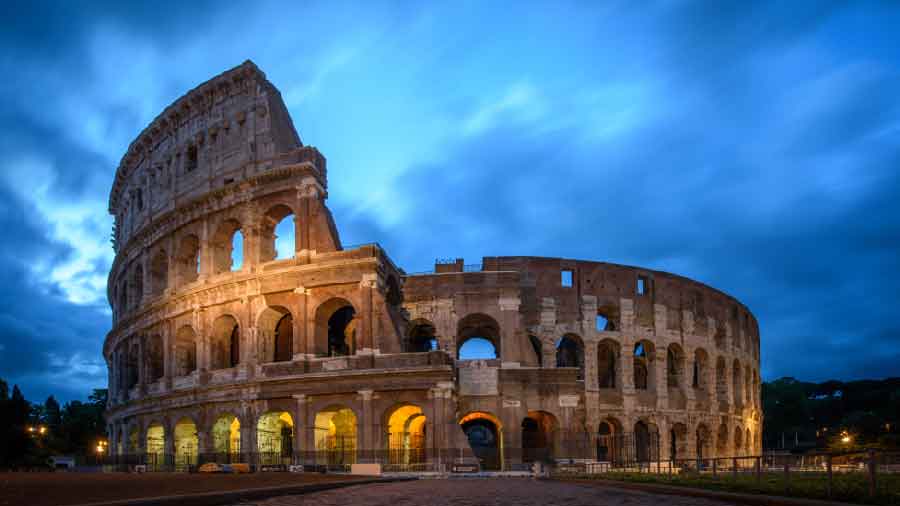For most people, the Colosseum conjures up scenes of bloody gladiatorial combat, or doomed encounters between Christians and vicious lions and tigers.
But the recent restoration of a 17th-century wall painting of ancient Jerusalem on one of the Colosseum’s main interior arches is shedding new light on another centuries-old use of the Roman landmark: as a sacred site for Christian worship.
“It’s a fragment of the history of the Colosseum that broadens our understanding of the monument, not just as an arena for spectacles, but as a structure with a varied past,” said Federica Rinaldi, the archaeologist responsible for the Colosseum.
Gory entertainment headlined at the ancient amphitheater for only about 400 years after it was built in Rome in AD 72 by Vespasian, the first of the Flavian emperors, and dedicated eight years later by his son Titus.
For centuries after, the Colosseum was occupied by Christian groups for religious processions and adopted by a succession of popes, who eventually consecrated it as a church, even as they removed its marbles for the construction of new buildings around the city.
For a time, it became a pilgrimage site honouring Christian martyrs, even though there is no documented evidence that Christians were killed there for their faith.
The restored wall painting, believed to have been painted in the 17th century, had been easy to miss. Positioned above a soaring arch, the Triumphal Door, through which gladiators would march in Roman times, the work had been so faded that “it had been practically illegible”, said Alfonsina Russo, the director of the Roman archaeological park that includes the Colosseum.
Now that it has been restored and supplemented with a multimedia installation to make it easier to decipher, a bird’s-eye view of Jerusalem — an idealised depiction of the city at the time of Jesus Christ — is visible. Jesus is portrayed in a lower corner of the painting, both nailed to the cross and in the moment of resurrection.
The painting provides a “piece of the puzzle” in the Colosseum’s long and complex history, “which deserved to be explored and made known to the general public”, Russo said last week at a presentation of a recently published book on the painting’s restoration, which was carried out in 2020 while the site was closed because of the pandemic.
Scholarly research has determined that the painting dates from the 17th century, though there is a debate about its authorship. The depiction of Jerusalem appears to have been based on a 1601 print of the ancient city by the painter Antonio Tempesta.
Starting in the 14th century, two Christian confraternities — associations of laypeople — became affiliated with the Colosseum and began putting on representations of the Passion of Christ. In the 16th century, one confraternity built a small church inside the arena, Santa Maria della Pieta, which still exists.
Rinaldi, the archaeologist, said it was possible that one of the confraternities also commissioned the painting.
The Colosseum became a public church in 1756, when Benedict XIV consecrated it in the memory of Christ and Christian martyrs. Eight years earlier, Benedict had persuaded the governor of Rome to pass a law barring anyone from profaning the monument because it was a place of devotion, and in 1750, he erected a huge wooden cross in its centre.
After the unification of Italy in the 19th century, anticlerical sentiments swept the country, and all associations with the church were removed from the Roman monument, according to Barbara Jatta, the director of the Vatican Museums.
New York Times News Service










